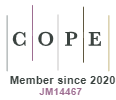ANALYSIS OF PUBLIC SPACE THROUGH CLIMATIC VARIABLES IN THE CENTRAL AREA OF A CITY IN THE NORTH OF RIO GRANDE DO SUL, BRAZIL
DOI:
https://doi.org/10.5585/geas.v8i1.13762Keywords:
Urban ambience. Comfort. Bioclimatic variables.Abstract
Aim: To diagnose and analyze four main variables of urban ambience in central Passo Fundo, which were temperature, wind speed, humidity and environmental noise.Methodology: The methodology consisted initially in the definition of three core areas of the city (one with vegetation and two paved). The measurement of the variables was performed in the morning and afternoon shifts, when half the samples was collected in the shade and the other half, with sun exposure. Bioclimatic datasheets for characterization were filled out for each area characterization.
Originality/Relevance: Besides the presented analysis being a proposal within the bioclimatic theory, the evaluation of spaces like squares and streets allows other elements of the local infrastructure to complement and to generate the necessary comfort for all the inhabitants.
Main findings: In the paved areas there is a higher concentration of heat and noise both in the morning and in the afternoon. In addition, the humidity is higher in the area with vegetation and wind measurements did not show a pattern like the other items evaluated.
Theoretical/methodological contributions: The research proved the importance of green areas in the city, both for climate balance and for the existence of points with a better urban environment for the population.
Conclusion: Considering the characteristics of urban ambience in the public space, their importance for comfort and their relationship with urban planning, this study evaluated the existing microclimate in three pre-established locations in the city of Passo Fundo, located in the north of Rio Grande do Sul state, Brazil.
Downloads
Downloads
Published
How to Cite
Issue
Section
License
Copyright (c) 2019 Revista de Gestão Ambiental e Sustentabilidade – GeAS

This work is licensed under a Creative Commons Attribution-NonCommercial-ShareAlike 4.0 International License.









